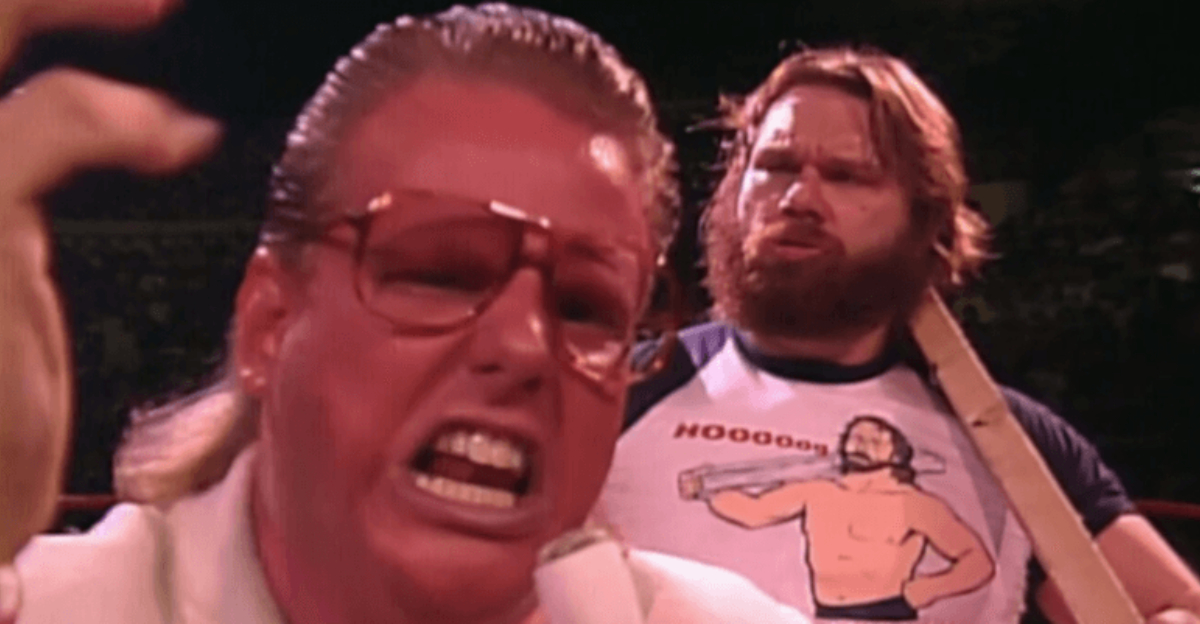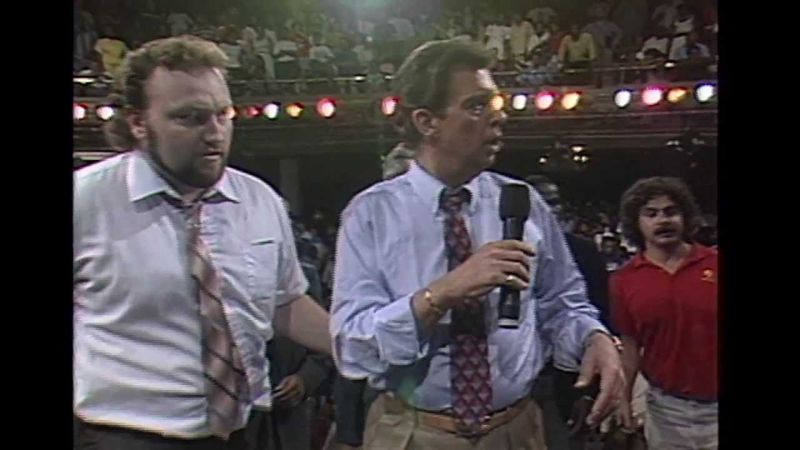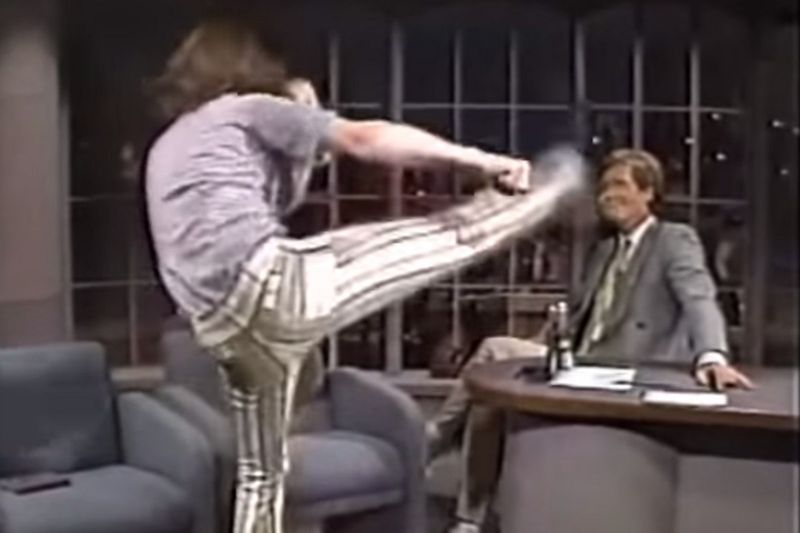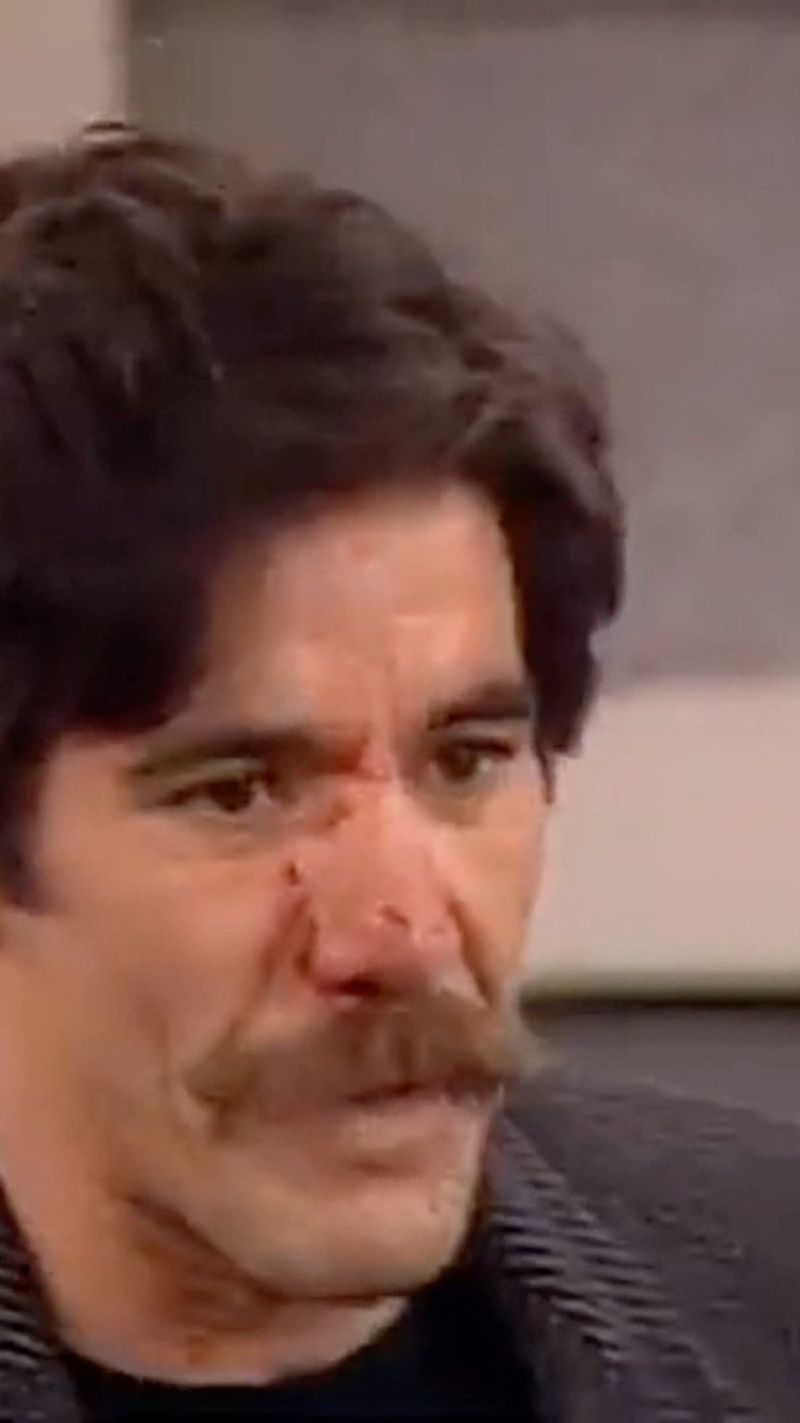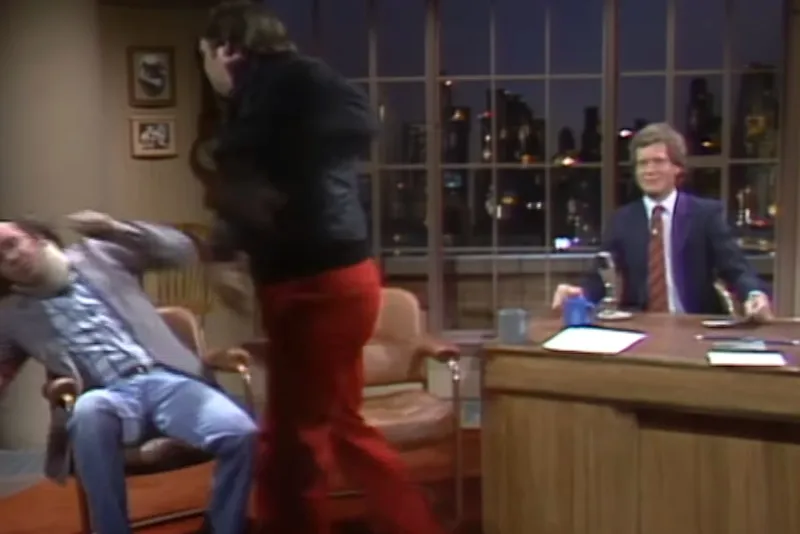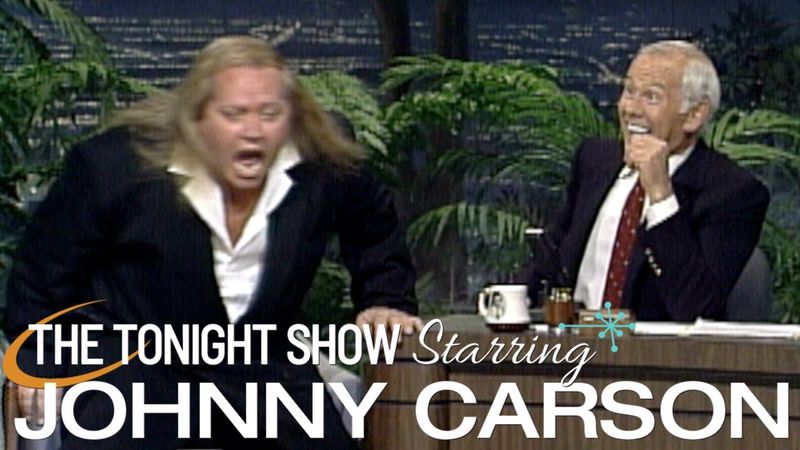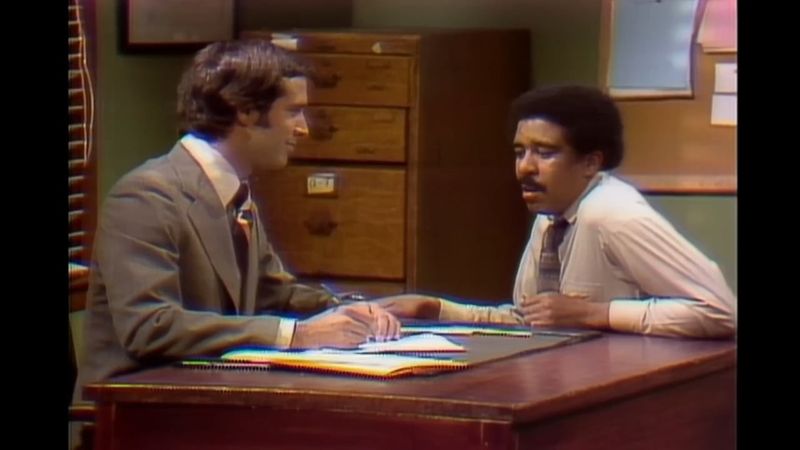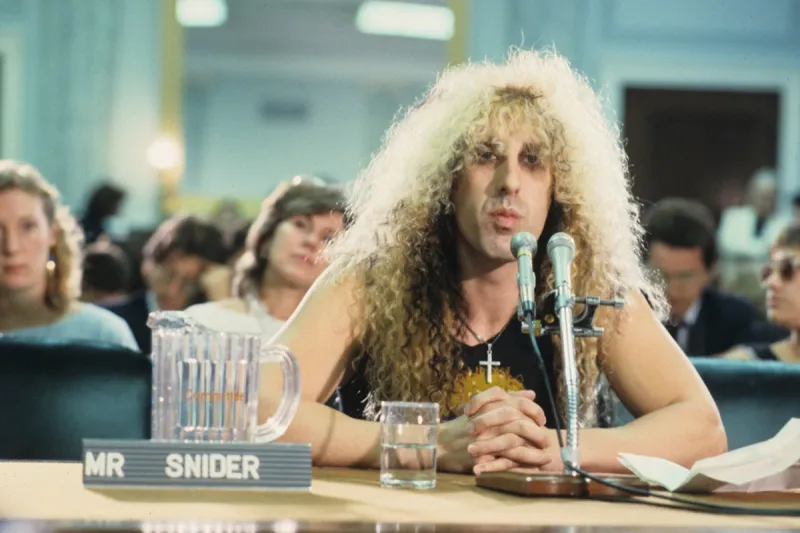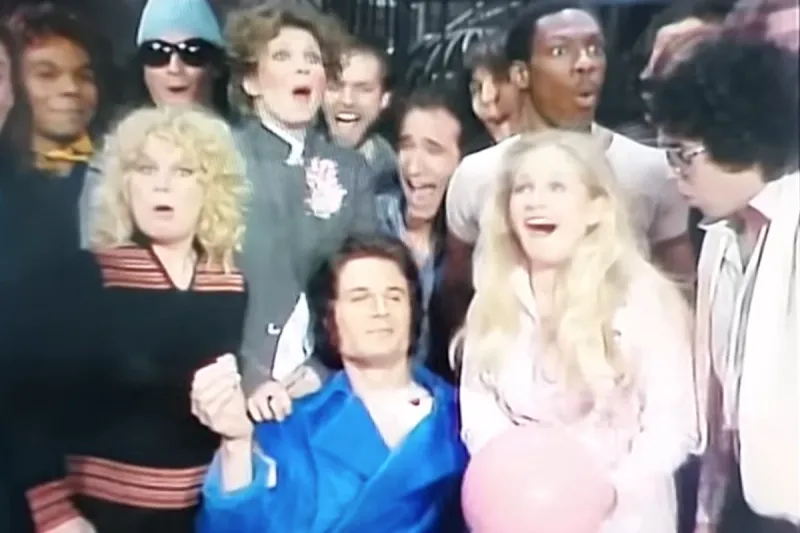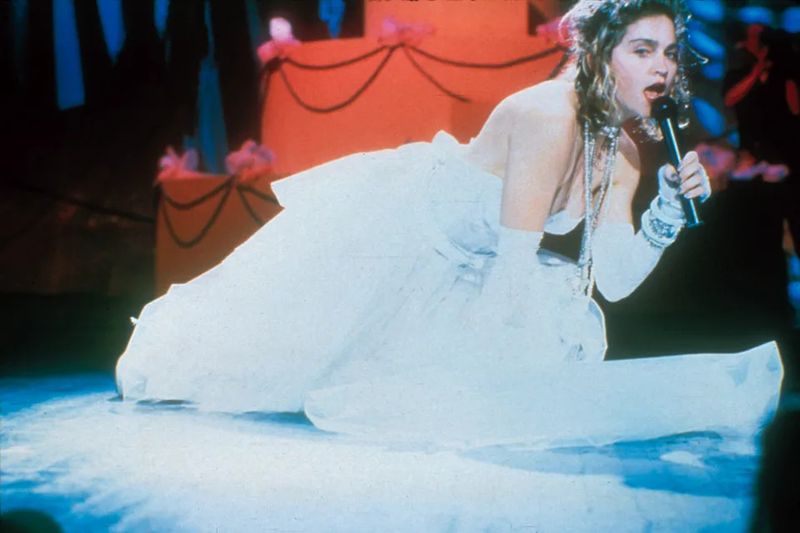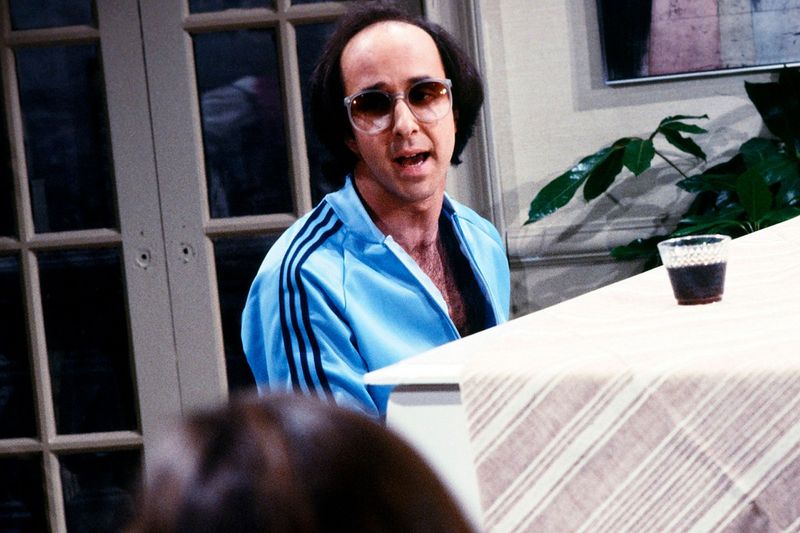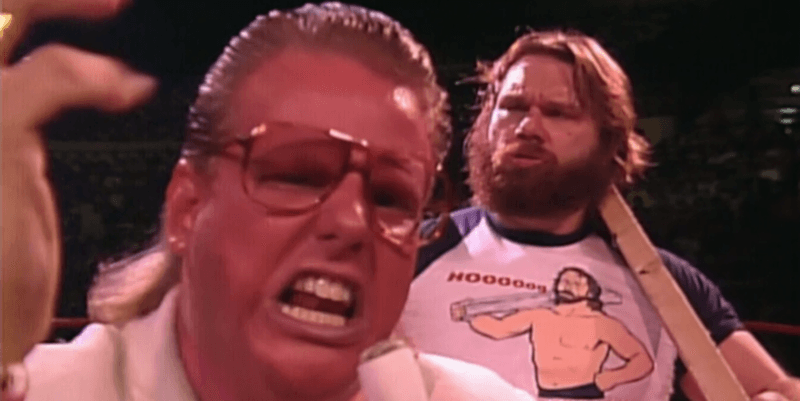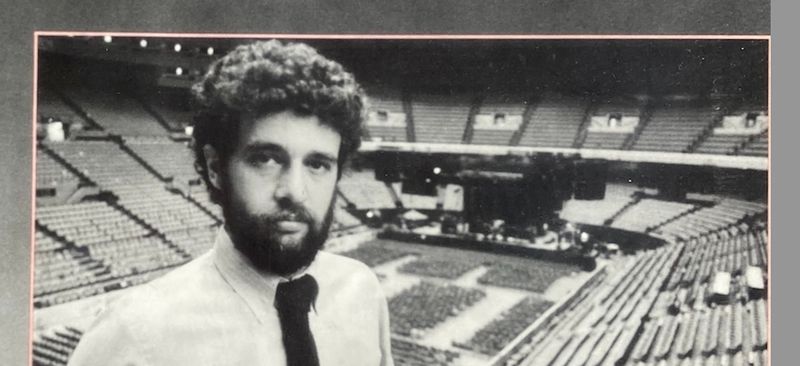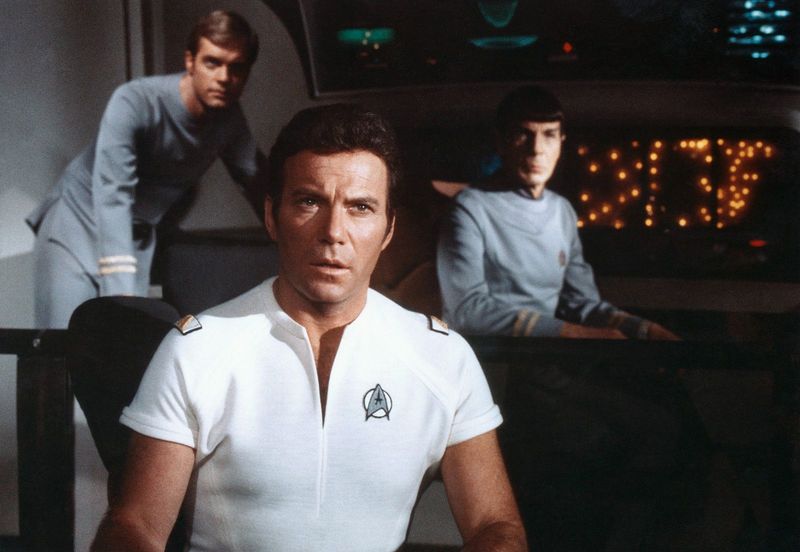Television in the 1980s was a wild frontier where anything could happen when cameras rolled. Before the days of broadcast delays and digital censorship, live TV captured raw, unfiltered moments of conflict that shocked viewers across America. From talk show hosts getting punched to musical guests going rogue, these unexpected confrontations didn’t just make headlines—they permanently changed how networks approached live broadcasting, creating unforgettable moments that still resonate decades later.
Morton Downey Jr.’s Chair-Throwing Chaos
Cigarette smoke filled the studio as Morton Downey Jr. deliberately provoked his guests into confrontation. His tabloid-style program became infamous for its volatile atmosphere where shouting matches were the norm rather than the exception.
During a particularly heated 1988 episode about racism, two guests lunged at each other before security could intervene. Chairs went flying, audience members screamed, and Downey himself egged on the mayhem instead of stopping it.
The show’s producers initially celebrated these confrontations as ratings gold, but advertisers eventually fled. Downey’s brand of confrontational television paved the way for the even more outrageous talk shows of the 1990s while forcing networks to implement stricter safety protocols.
Crispin Glover’s Bizarre Letterman Attack
The audience laughed nervously as Crispin Glover, wearing platform shoes and a wig, rambled incoherently on Late Night with David Letterman. Fresh off his Back to the Future fame, Glover appeared to be having some kind of breakdown.
Without warning, the actor suddenly stood up and delivered a karate kick that came within inches of Letterman’s face. “I’m going to check on the Top 10,” Letterman quipped before abruptly walking off his own set and cutting to commercial.
When the show returned, Glover was gone. This 1987 incident immediately entered television lore as one of the most uncomfortable celebrity interviews ever. It prompted talk shows to implement stricter guest screening processes and demonstrated the unpredictable dangers of live television.
Geraldo’s Broken Nose Broadcast
Blood streamed down Geraldo Rivera’s face as cameras continued rolling. The November 1988 episode titled “Young Hate Mongers” had brought together white supremacists, Black activists, and Jewish defense leaders in an explosive combination.
When one supremacist called a Black guest an offensive slur, chairs and fists started flying. Rivera jumped into the fray to separate combatants and caught a chair to the face, breaking his nose with an audible crack heard on microphones.
Instead of stopping the broadcast, a bloodied Geraldo continued filming. The episode earned the highest ratings in talk show history at that time. This infamous brawl forced networks to reconsider their responsibility when putting controversial figures together and established new security standards for confrontational programming.
Kaufman and Lawler’s Coffee-Throwing Feud
Andy Kaufman wore a neck brace as he sat beside professional wrestler Jerry “The King” Lawler on Late Night with David Letterman. The comedian had been claiming injury from a previous wrestling match with Lawler, part of Kaufman’s elaborate performance art.
Tensions escalated when Lawler suddenly slapped Kaufman hard enough to knock him from his chair. After a stunned moment, Kaufman returned to his seat, unleashed a torrent of profanity (bleeped by censors), and threw his coffee at Lawler.
Viewers were shocked by the apparent real-life hatred displayed on national television. Only years later was it revealed as a carefully planned hoax. The 1982 incident blurred the lines between reality and performance, influencing everything from wrestling storylines to reality TV confrontations for decades to come.
Sam Kinison vs. Don Rickles Comedy Clash
The Tonight Show studio crackled with tension as comedy legends Sam Kinison and Don Rickles shared the couch. What began as playful ribbing quickly soured when Kinison, the younger, edgier comedian, seemed to challenge Rickles’ relevance.
“You had your time, old man,” Kinison implied through thinly veiled jokes. Rickles, never one to back down, fired back with increasingly personal jabs about Kinison’s substance use and appearance. Johnny Carson, visibly uncomfortable, attempted to mediate as the audience’s laughter grew uneasy.
Though no punches were thrown, the 1988 verbal sparring match represented a generational clash in comedy styles. The confrontation highlighted television’s power to capture authentic conflict between entertainment personalities and demonstrated how even professional comedians could lose control of their emotions on live TV.
SNL’s Backstage Pryor-Chase Confrontation
Racial tensions exploded behind the scenes of Saturday Night Live when Richard Pryor and Chevy Chase clashed over comedy boundaries. Their infamous “Word Association” sketch had pushed boundaries with racial slurs, but the real drama happened off-camera.
Multiple SNL writers and cast members witnessed a heated confrontation where Pryor allegedly threatened Chase physically if he deviated from the agreed script. The intense backstage argument spilled over into rehearsals, creating a hostile environment that crew members described as “walking on eggshells.”
Though viewers at home never saw this confrontation directly, the tension was palpable during the broadcast. This early 1980s incident exposed the racial and creative tensions within comedy’s most influential show. It forced networks to confront how behind-the-scenes conflicts could impact performances and workplace culture.
Dee Snider’s Congressional Showdown
The Senate hearing room fell silent as Twisted Sister frontman Dee Snider, his wild blonde mane contrasting sharply with the wood-paneled formality, took his seat. Parents Music Resource Center co-founder Tipper Gore expected an inarticulate metal musician she could easily dismiss.
Instead, Snider delivered an eloquent, point-by-point dismantling of music censorship arguments. When Gore attempted to characterize Snider’s lyrics as promoting violence and sexual perversion, he calmly explained her fundamental misinterpretations while cameras broadcast the exchange nationwide.
The 1985 PMRC hearings weren’t physical brawls, but they represented an unprecedented cultural collision on live television. Snider’s composed yet passionate defense of artistic expression shocked viewers who expected a stereotypical rocker meltdown. This watershed moment changed how Americans perceived both heavy metal musicians and government censorship attempts.
Charles Rocket’s Career-Ending F-Bomb
The Saturday Night Live cast gathered for the traditional goodnight segment after a February 1981 episode. Charles Rocket, playing a character who had been shot in a Dallas parody earlier in the show, was asked how it felt.
“I’d like to know who the f*** did it,” Rocket casually replied, dropping television’s most forbidden word on live national broadcast. The studio fell momentarily silent before nervous laughter and shocked faces revealed the unscripted nature of his comment.
NBC executives were furious. Within weeks, producer Jean Doumanian and most of the cast were fired in one of television’s most dramatic purges. This rebellious moment wasn’t a physical fight but a self-destructive act of defiance that changed SNL forever. The incident led networks to implement stricter language policies and delay mechanisms for live broadcasts.
Madonna’s VMA Controversy
The audience gasped as Madonna descended a massive wedding cake in a white dress during the inaugural MTV Video Music Awards. What followed was a performance so provocative that network executives nearly pulled the plug mid-broadcast.
Rolling on the stage floor while singing “Like a Virgin,” Madonna’s dress rode up, briefly exposing herself to millions of viewers. Cameras frantically cut away as directors shouted instructions in the control room, but the damage was done.
Though not technically a fight, this 1984 incident represented a direct challenge to broadcast standards. MTV executives reportedly threatened to ban Madonna from the network entirely. Her defiant performance sparked a nationwide debate about censorship in the music video era and established the VMAs as a platform where artists could push boundaries—a tradition that continues today.
Murray and Shaffer’s Musical Meltdown
Tension filled Studio 8H during a 1980 Saturday Night Live musical rehearsal when Bill Murray and musical director Paul Shaffer clashed over an arrangement. Witnesses reported Murray shouting that Shaffer’s music cues were “sabotaging” his performance, while Shaffer defended his creative choices.
The argument escalated until Murray allegedly threw a music stand across the room. Though the cameras weren’t rolling during this backstage blowup, the aftereffects were visible during the live broadcast hours later—Murray and Shaffer noticeably avoided each other, with Murray skipping the customary musical outro where cast members typically danced with the band.
This behind-the-scenes eruption highlighted the intense pressures of live television production. The incident became part of SNL lore and demonstrated how personal conflicts could impact on-air chemistry, even when audiences weren’t privy to the original confrontation.
Brother Love’s Televangelist Takedown
Bruce Prichard, portraying the red-faced televangelist character Brother Love, stood in the WWF ring delivering an inflammatory sermon designed to antagonize wrestling fans. His character’s smug religious hypocrisy pushed buttons intentionally, creating genuine heat with the audience.
During a 1988 live segment of WWF Superstars of Wrestling, an enraged fan suddenly vaulted the barricade and charged toward Prichard. Security intercepted the man just feet from the ring, but viewers witnessed the authentic danger performers faced when characters became too convincing.
The incident forced the World Wrestling Federation to implement stronger security measures, including wider buffer zones between performers and audiences. This real breach of the fourth wall revealed the thin line between entertainment and genuine confrontation in wrestling programming, influencing how wrestling promotions would approach audience interaction for years to come.
Zappa vs. Bono PMRC Hearing Clash
Frank Zappa’s testimony before Congress during the 1985 PMRC hearings took an unexpected turn when he faced off against Representative Sonny Bono. The two musicians-turned-adversaries created compelling television as millions watched on C-SPAN.
“You were one of us,” Zappa said pointedly to Bono, suggesting the former pop star had betrayed artistic freedom. Bono, visibly uncomfortable, defended the need for content warnings while avoiding direct criticism of his former peer. The exchange grew increasingly personal as Zappa questioned Bono’s political motivations.
Though conducted with parliamentary decorum, the confrontation represented a profound ideological battle played out on national television. This clash of counterculture icon versus establishment convert symbolized the larger culture wars of the 1980s. Their televised disagreement helped frame public discourse around censorship and artistic expression for decades.
Conrad and Shatner’s Star-Studded Standoff
Competitive fury erupted during ABC’s popular Battle of the Network Stars when actors Robert Conrad and William Shatner faced off in a relay race. Shatner, representing CBS, appeared to cut off Conrad’s ABC team during a crucial handoff.
When Conrad confronted Shatner about the perceived cheating, cameras captured the Wild Wild West star shoving the Star Trek captain. “You know what you did, Bill!” Conrad shouted as producers and fellow celebrities rushed to separate them. Shatner maintained his innocence while Conrad demanded the race be rerun.
The 1982 confrontation revealed how seriously these celebrities took what was supposed to be friendly competition. Though briefly edited from rebroadcasts, the original live transmission showed viewers their idols’ unfiltered competitive natures. This incident contributed to the show’s reputation for genuine athletic drama rather than scripted entertainment.
